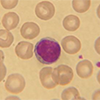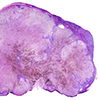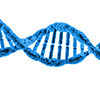Minimum Dataset for Completing Request Forms
Minimum Dataset for Completing Request Forms
Ensure that the request form is legible and completed as fully as possible. The correct request form must be completed and must accompany any specimen to the correct laboratory. Both the specimen label and the request form must contain the appropriate minimum data set.
There must be:
- Unequivocal identification of the patient and matched to the specimen to the request - bear in mind the regional and cultural predominance of certain common names;
- Sufficient information to allow the specimen collector to make the correct choice of timing, specimen to collect (specimen type) and container to use;
- Sufficient information to identify the exact site of sampling (e.g. for biopsies, some culture swabs, etc.). Where different sample sites are included on one request form the site of each specimen must be unequivocally noted on the specimen label also;
- Sufficient information to aid the audit trail of a specimen from request to laboratory;
- Sufficient clinical details to allow laboratory interpretation of the result an analysis, including any current condition or therapy that might interfere with analyses.
- Time of sample collection ~ for some assays the time a specimen has been in transit can greatly affect the quality of the result.
All details on the request card should be completed including details of current therapy. Please include the NHS number if known on both the request card and specimen bottle. If printed labels are available please double check you are using the correct one: the large label with the bar code should be applied to the request card and the small labels attached to the specimen containers. You must ensure that the correct location is entered on the request card. Failure to record this will mean that a report cannot reach the patient’s notes. This is particularly important if the patient has moved and labels from the previous location are used, you must ensure that the correct current location is entered on the label. Where a two-part form is used please ensure that information is legible on both parts of the form.
NB: it is not acceptable to use a pre-printed label on a specimen for transfusion purposes, this must be handwritten, legibly and unambiguously.
Poorly labelled or mismatched specimens may not be analysed for medical legal reasons.
It is a requirement of the Blood Safety and Quality Regulations that the blood bank and pathology reception operate zero tolerance with regards to the minimum data set requirement for blood transfusion product requests forms and sample labelling.
1.1. Specimen Tracking
A specimen tracking audit trail is crucial (for quality assurance, clinical governance clinical governance and medical-legal reasons).
There must be a traceable history and "chain-of-custody" which should include:
- the identification and location of the responsible clinician ordering the test;
- the analytical tests/examinations required;
- the patient, location and medical specialty (i.e. the original source of the specimen unambiguously identified);
- the person collecting the specimen with the date and time collected;
- the nature of the specimen collected (and if appropriate, anatomical site of origin);
- the analytical tests required;
- the laboratory undertaking the analysis;
- identification of priority status;
- where the results should be sent (if different from above);
- the resulting analytical data relating to that specimen (and sub-samples thereof);
- the reported result.
1.2. Minimum Data-set
Data on the request form and the specimen must be compatible. All specimens must carry a minimum, legible and compatible data-set on both the request form and the specimen label.
|
Patient Data Item |
Request Form |
Specimen Container |
|
Surname |
Y |
Y |
|
Forename (not just initials) |
Y |
Y |
|
Date of Birth |
Y |
Y |
|
Hospital ID &/or NHS number |
Y |
Y |
|
Sex |
Y |
|
|
Location |
Y |
Y |
|
Report Destination |
Y |
|
|
Requesting Practitioner |
Y |
|
|
Consultant (if different from above) |
Y |
|
|
Clinical Details |
Y |
|
|
Date of Collection |
Y |
Y |
|
Time of Collection |
Y |
Y |
|
Specimen type (& site if appropriate) |
Y |
Y (for Histology) |
|
Investigations required |
Y |
|
Certain specimens labels may have insufficient room to physically allow a full data set in this case include as many key identifiers as possible.
Additional information may also be required such as notification of known or suspected biohazard of the specimen, priority of the result (or date required if for Cellular Pathology), or to aid the reconciliation of the patient with a record on ‘Lorenzo’ or in the patient’s notes.
Time of collection is crucial in several circumstances, including:
- To assess the suitability of a sample for tests where cellular degradation over time (e.g. K+ leakage) may interfere or give an incorrect result.
- For tests that are part of a timed series (Dynamic Function Tests, e.g. Glucose Tolerance Tests, Endocrine Function Tests etc.),
- To allow the laboratory to properly audit specimen turnaround times.
If sufficient clinical details are not provided then the laboratory will not be in a position to offer an interpretation of the result of the test or examination, in this case the laboratory will note this on the report.
If patient anonymity is important a properly coded identifier may be used but this has to be part of a documented system which properly and unambiguously identifies the patient.
Computer software systems may be in use within the Trust (e.g. PICS) which are capable of generating patient specific printed labels. The use of computer generated patient identification (PID) labels for the request form and specimen introduces a risk of misidentification under certain circumstances. Always double check that the correct label has been affixed to the correct request and is accompanied by the correct specimen.
NB: it is not acceptable to use a pre-printed label on a specimen tube for transfusion purposes; this must be handwritten, legibly and unambiguously.
If and when barcodes might be used to identify a request and specimen or sample, these do not replace the requirement for adequate labelling, but in addition the barcode on the specimen and the request form must be identical.
In exceptional circumstances where the minimum dataset is impossible to collect, such as an unidentified patient attending casualty, the laboratory may process the request but will make it clear on the report supplied that necessary data is missing for the unambiguous reconciliation of the patient with the sample received.
- Created on .
- Last updated on .
- Hits: 16102
 Biochemistry
Biochemistry Haematology and Transfusion
Haematology and Transfusion Clinical Microbiology (Including Virology)
Clinical Microbiology (Including Virology) Cellular Pathology
Cellular Pathology General Information
General Information Molecular Pathology
Molecular Pathology